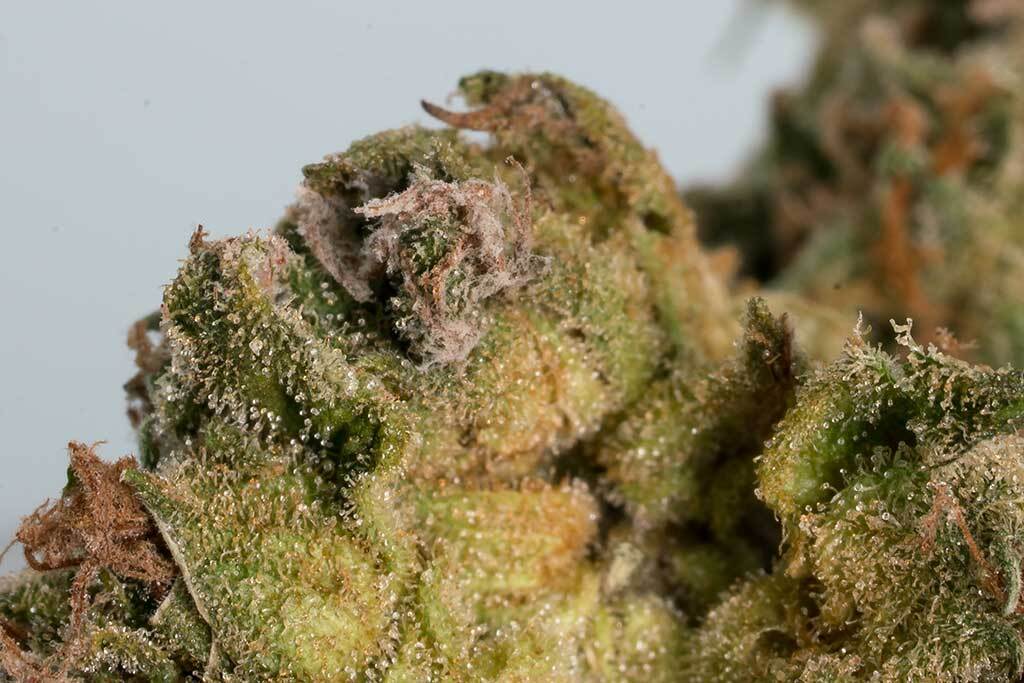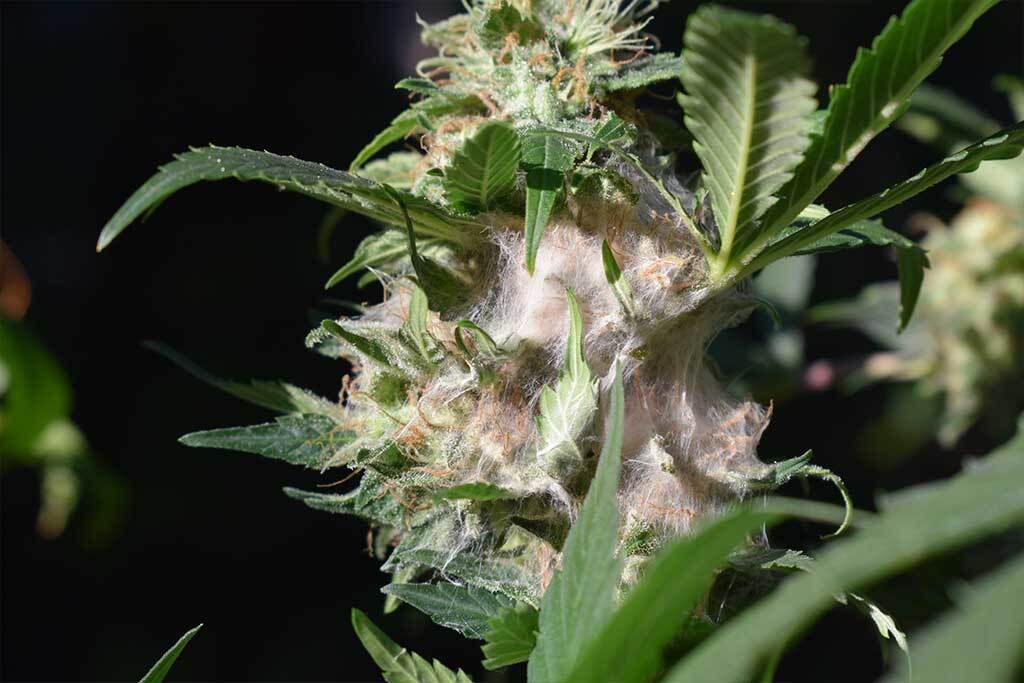With a name like bud rot, you know it can’t be good. Cannabis bud rot is something no grower ever wants to see in the later phases of plant maturity. Salvaging bud rot is difficult, but if you catch it early enough you can treat it. It’s important to be able to spot those early signs and even more important to understand the common bud rot causes so that you can help you prevent it.
What is bud rot?
Put simply, cannabis bud rot is a fungus or mold that can grow on cannabis plants. More technically it’s known as botrytis cinerea, or gray mold. The pathogen initially develops from the center of the buds, and stem and normally appears in the late stages of bloom. With just the right (or wrong!) conditions the mold can spread from the inside out taking over the entire nug.
As you may know, molds are highly concerning when your growing weed as it can make the flower unsafe to consume. Fungus and molds like cannabis bud rot grow and spread at an alarming rate, so you need to know what you’re looking for and act fast. Next, let’s cover the top ways to identify and treat bud rot.
What does bud rot look like?
Now, knowing that cannabis bud rot begins in the heart of buds it can easily go unseen. That means, towards the end of flowering you may want to open up buds and peer inside to see if any molds are visible. For cannabis bud rot you’ll notice an odd discoloration that looks somewhat burnt, dark gray or brown in color. Usually, bud rot affects denser buds more than others but that doesn’t mean it holds back from all parts of the plant.
Unfortunately, the top main colas are often the most dense. Meaning cannabis bud rot can be detrimental to the best parts of your plant. In addition to discoloration, you may also notice the outer parts of the plant dying as cannabis bud rot symptoms. Like, buds, pistils or leaves showing signs of shriveling. This initial sign of bud rot might be an indicator to take a closer look. Cannabis bud rot may also look white and fluffy on the outside, which is the actual spores of the fungus.
What are the early signs of bud rot?
- The very first signs of of bud rot are a darkening and softening of the plant's surface, particularly around the buds where the infection starts.
- After these very early signs, a gray, fuzzy mold forms as botrytis breaks through the surface.
Although the buds are the most common site of infection, bud rot can affect any part of the cannabis plant including leaves, stems, and flowers.
The gray mold you’ll see on the affected parts of the plant consists of thousands of fungal spores. By the time the mold becomes visible, the spores of botrytis may have already spread, making it significantly harder to contain the infection and prevent it from affecting more plants.
What Causes Cannabis Bud Rot?

First off, it’s important to understand fungus like molds develop in humid, damp and warm conditions. Which means the environment in which your plants grow is one of the main bud rot causes. Specific factors that contribute to the development and growth of cannabis bud rot include.
- High levels of humidity
- Mild or cold temperatures
- Wet or rainy temperatures
- Poor indoor ventilation
- Dense foliage and buds
In addition, plants with weak immune systems can be more susceptible to cannabis bud rot. Furthermore, certain strains or genetics can be more prone to mold development as well. If you grow outdoors in a climate that has high humidity, frequent rain or milder temperatures - you may want to choose a strain from the start that’s resistant to molds. Keep in mind, sativa strains tend to be lighter and airier and overall more mold resistant. On the flip side, indica strains originated from dry regions in Asia so when grown in areas with high humidity they can be more susceptible to molds.
How humidity causes bud rot
The leading cause of bud rot is elevated humidity levels. When the humidity in the environment becomes excessively high, reaching a relative humidity of close to 100% (also known as the dew point), condensation begins to form on surfaces. This includes the structure of the grow area, any equipment present, and the cannabis plants themselves.
Because of the dense structure of cannabis buds, they end up trapping moisture inside them. This trapped moisture then condenses within the buds, establishing the perfect environment for gray mold to develop.
As a result, during the flowering stage, when the buds are most developed, cannabis plants are at their highest risk of succumbing to bud rot, highlighting the importance of controlling humidity levels to mitigate this risk.
Can You Treat Bud Rot?
If you have noticed bud rot on your plants you might be asking, can I salvage my grow? In most cases by the time you have seen the clear signs of mold its probably too late. However, you may still be able to salvage your grow. By either harvesting early of removing the infected parts.
Harvesting early
One approach is to harvest the plants early, a decision that may prevent the further spread of bud rot to the uninfected parts of the plant. This preemptive measure allows for the preservation of the healthy portions of the plant, even though it might result in a reduced yield.
Cutting out the infected parts
Alternatively, if it's too early in the growing cycle to consider harvesting, a more targeted approach can be taken by carefully cutting away the infected parts of the plant. This method involves a bit of risk, as it opens up the plant to potential stress and further infection, but it can sometimes work to save the grow when done meticulously and only as a last resort before the plants are mature enough for harvest.
Unfortunately, in most cases there is no guaranteed way to treat bud rot and once you have seen the clear signs, it most likely has already spread to other parts. However, if not caught in time - you may have to discard the whole plant. Of course, no grower wants to throw away all of their hard work, time and energy. So, let’s brush up on the basic ways to prevent bud rot when growing and bud rot after harvest.
How to prevent bud rot
While preventing bud rot outdoors might be more difficult, here are a few of the top ways for prevention.
- Improve airflow or air circulation with additional fans, or exhaust systems.
- Control humidity levels with hygrometers and dehumidifiers indoors.
- Increase spacing between plants.
- Inspect plants for signs of bud rot daily.
- Avoid the pooling of water or areas of standing water.
- Defoliate plants to remove excess leaves to additionally boost plant airflow.
- Maintain proper levels of nutrients, as plants that are improperly fed will have weaker immune systems.
- If growing outdoors, consider using a greenhouse to avoid plants being rained one. Or, lightly shake off plants after a heavy rain.
How to prevent bud post harvest
Of course, you’re not in the clear of cannabis bud rot after harvesting. Cannabis bud rot can also occur during the drying or curing phase if optimal conditions are not kept. To decrease your chances for developing bud rot after harvest, be aware of the following tips -
- Allow plants moisture levels to decrease before pulling. This could mean harvesting your plants during a dry spell.
- Before drying, consider wet trimming excess fan and sugar leaves to reduce moisture.
- Just like growing, leave space between stalks or plants when drying. Take your environment just as seriously in your drying room, and use dehumidifiers and fans to maintain optimal conditions.
- The best conditions to avoid cannabis bud rot when drying and curing are temperatures of 60-70°F and humidity between 50-65%.
What week of flowering does bud rot normally start?
It is most common for bud rot to occur in between weeks 5 – 8 when the buds are denser and more developed.
Does bud rot affect potency?
Yes, the fungi from bud rot grows in the bud itself and kills the trichomes as it grows. Trichomes are what contain most of the plants cannabinoids, so bud rot will affect potency of the bud its growing on. However, most of this will need to be discarded anyway.
If you chop out the infected parts of the plant to salvage what you can, the remaining flowers may suffer slightly from the stress of this. This could have a knock on effect and reduce potency on the rest of the plant as well.
Is powdery mildew the same as bud rot?
Bud rot and powdery mildew are both types of fungal infections, however they are not the same. Bud rot is caused by the fungus Botrytis Cinerea and thrives in high humidity conditions. Powdery mildew is a type of mold called Oidium and is regarded as a 'dry mold,' that can can grow quickly even in environments with relatively low humidity.
The Bottom Line
All in all, cannabis bud rot is something you’ll want to avoid when growing or drying buds. Luckily now, you have the proper information to do so. Be sure you’re maintaining optimal conditions with the tips you’ve learned today to avoid common bud rot causes. But, now that you’re properly trained on identifying bud rot, also be sure to keep a good eye out for it. For more growing tips and tricks stay tuned to 420 Seeds or browse our selection of seeds for top-quality genetics.










